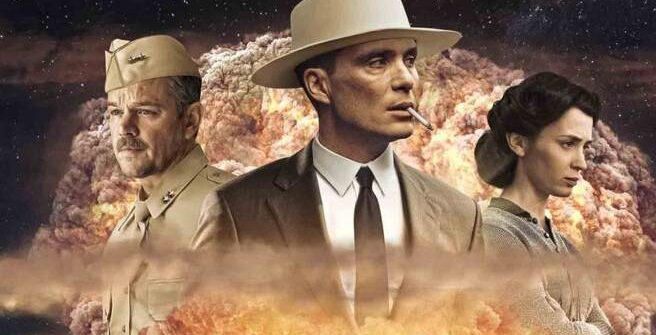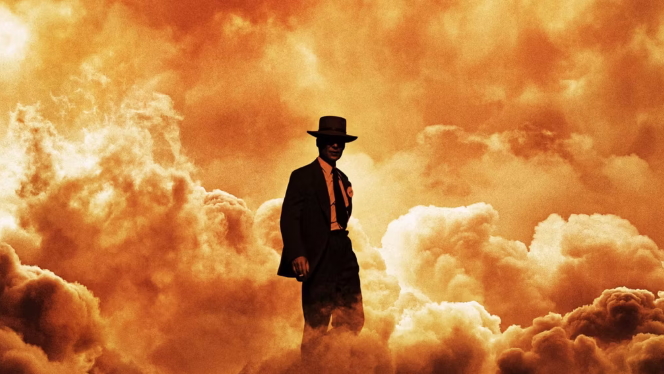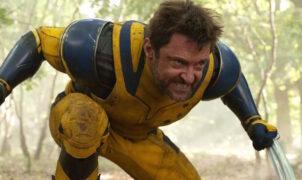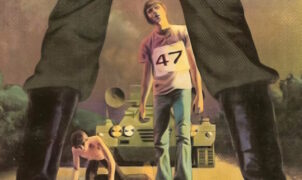PREVIEW – Written and directed by CHRISTOPHER NOLAN, Oppenheimer is an IMAX®-shot epic thriller that thrusts audiences into the pulse-pounding paradox of the enigmatic man who must risk destroying the world in order to save it.
The film stars CILLIAN MURPHY as J. Robert Oppenheimer and Golden Globe winner EMILY BLUNT as his wife, biologist and botanist Kitty Oppenheimer. Oscar® winner MATT DAMON portrays Leslie Groves, director of the Manhattan Project, and Oscar® nominee ROBERT DOWNEY, JR. plays Lewis Strauss, a founding commissioner of the U.S. Atomic Energy Commission.
Academy Award® nominee FLORENCE PUGH plays psychiatrist Jean Tatlock; JOSH HARTNETT plays pioneering American nuclear scientist Ernest Lawrence; Oscar® winner CASEY AFFLECK plays Boris Pash, chief of Army counter-intelligence at the Presidio in San Francisco; Oscar® winner RAMI MALEK plays David Hill, an associate experimental physicist; and Oscar® winning filmmaker and actor KENNETH BRANAGH plays Nobel Prize winning physicist Niels Bohr.
Also starring are BENNY SAFDIE (Licorice Pizza) as theoretical physicist Edward Teller, DYLAN ARNOLD (Halloween films) as Frank Oppenheimer, Robert’s younger brother; GUSTAF SKARSGÅRD (Air) as Manhattan Project member Hans Bethe; DAVID KRUMHOLTZ (The Ballad of Buster Scruggs) as Nobel Prize winning physicist Isidor Rabi; MATTHEW MODINE (The Dark Knight Rises) as Vannevar Bush, head of the U.S. Office of Scientific Research and Development; DAVID DASTMALCHIAN (Dune: Part One) as William Borden, a zealous advocate for U.S. nuclear superiority; and Oscar® nominee TOM CONTI (The Dark Knight Rises) as Albert Einstein.
The cast includes, as members of the Manhattan Project, Emmy nominee MICHAEL ANGARANO (Haywire) as Robert Serber, JACK QUAID (Logan Lucky) as Richard Feynman, JOSH PECK (Red Dawn) as Kenneth Bainbridge, OLIVIA THIRLBY (Juno) as Lilli Hornig, DANE DEHAAN (Valerian and the City of a Thousand Planets) as Kenneth Nichols and DANNY DEFERRARI (Shiva Baby) as Nobel Prize winner Enrico Fermi.
ALDEN EHRENREICH (Solo: A Star Wars Story) appears as a Senate Aide; JEFFERSON HALL (Tenet) plays Haakon Chevalier, a friend of Oppenheimer; JASON CLARKE (Zero Dark Thirty) plays special counsel Roger Robb; JAMES D’ARCY (Dunkirk) plays Patrick Blackett, Oppenheimer’s head tutor at Cambridge; and TONY GOLDWYN (King Richard) plays Gordon Gray, a former Secretary of the Army who chaired the 1954 committee overseeing the security clearance hearing of Oppenheimer.
The film is based on the Pulitzer Prize-winning book American Prometheus: The Triumph and Tragedy of J. Robert Oppenheimer by KAI BIRD and the late MARTIN J. SHERWIN. The film is produced by Oscar® nominee EMMA THOMAS p.g.a. (Dunkirk, Inception), for Atlas Entertainment by Oscar® nominee CHARLES ROVEN p.g.a. (The Dark Knight trilogy, American Hustle), and CHRISTOPHER NOLAN p.g.a.
Nolan’s films, including Tenet, Dunkirk, Interstellar, Inception and The Dark Knight trilogy, have earned more than $5 billion at the global box office and have been awarded 11 Oscars and 36 nominations, including two Best Picture nominations.
Oppenheimer is filmed in a combination of IMAX® 65mm and 65mm large-format film photography including, for the first time ever, sections in IMAX® black and white analogue photography.
The director of photography is Oscar nominee HOYTE VAN HOYTEMA asc, fsf, nsc (Dunkirk, Tenet); the production designer is RUTH DE JONG (Us, Nope), the costume designer is winner ELLEN MIROJNICK (Fatal Attraction, Speed), the editor is JENNIFER LAME ace (Black Panther: Wakanda Forever, Tenet); and the music is by Academy Award® winner LUDWIG GÖRANSSON (Black Panther films, Tenet).
THE BACKSTORY
The films of Christopher Nolan have pushed the limits of cinematic storytelling to tell epic stories about unlikely heroes and audacious schemes that examine the necessity, morality, and hubris of ambitious endeavor. The brain-bending heist film Inception took audiences deep into the inner spaces of the dreaming mind, while his spectacular space odyssey Interstellar took them on a trippy journey into the outer limits and looping eddies of the universe. With Dunkirk, Nolan deployed multiple perspectives and time signatures to capture the harrowing experience of soldiers trying to survive the deadly and dehumanizing horrors of war, and with Tenet, he illuminated and manipulated the concepts of perspective and time to spin a metaphysical sci-fi thriller about the present under attack from the future. Each of his movies has been made with a delighted passion for the techniques of classic moviemaking while also expanding the boundaries of new tools, most notably IMAX® cameras, to reimagine the art of cinema itself.
Now, the Oscar®-nominated writer-director brings to screen his most ambitious and urgent movie yet, a sweeping, epic thriller that delves deep into the psyche of a singular American mind: the brilliant scientist behind the world-shattering invention that represented the total sum of human ingenuity, an invention that would remake civilization, even as its very existence threatened the future of mankind. Inspired by the Pulitzer Prize-winning book American Prometheus by Kai Bird and Martin J. Sherwin, Oppenheimer chronicles the life and legacy of J. Robert Oppenheimer, the father of the atomic bomb.
“What I wanted to do was take the audience into the mind and the experience of a person who sat at the absolute center of the largest shift in history,” says Nolan. “Like it or not, J. Robert Oppenheimer is the most important person who ever lived. He made the world we live in, for better or for worse. And his story must be seen to be believed.”
Pushing the Button
The making of the atomic bomb was a triumph of human ingenuity that yielded learning that has seeded innovation in countless areas of science and technology. But it also commenced an arms race that has had seismic and destructive ramifications for the entire world, introducing a new existential fear into the lives of people everywhere that has not gone away.
The origin of Nolan’s desire to make Oppenheimer lay in the fear that troubled the scientists of the Manhattan Project as they sought the secrets of fission to make a fusion bomb, a fear that Oppenheimer dubbed “the terrible possibility.”
“In the lead-up to the Trinity test, Oppenheimer and his team were dealing with the very small possibility that when they pushed that button and triggered that first bomb, they would set fire to the atmosphere and destroy the entire planet,” Nolan says. “There was no mathematical or theoretical basis on which they could completely rule out that possibility, however small. And yet, they pushed that button, anyway. It’s an extraordinary moment in human history. I wanted to take the audience into that room and be there for that conversation, and then be there when that button is pushed. It’s just the most incredible moment, if you think about it. The risk of it. The relationship between science, theory, intellect—the things that we can imagine—versus the practical nature of bringing these abstract ideas into the real world, dealing with them as concrete realities, and all their consequences.” (Evidence of Nolan’s fascination with “the terrible possibility” can be found in his previous film, Tenet, which referenced the story.)
American Prometheus became a bible that informed and guided every aspect of the Oppenheimer production. During the screenwriting phase, it provided Nolan with rich stores of insight that helped him craft what interested him most, a critical portrait of Oppenheimer that not only dramatized formative and milestone events, but also explored his psychology and interrogated the consequences of his actions.
“Oppenheimer’s story is one of the great stories that there is,” Nolan says. “It’s full of paradoxes and ethical dilemmas, and that’s the kind of material I’m always interested in. While the movie tries to help the audience understand why people have done the things they’ve done, it’s at the same time asking should they have done the things they’ve done. And film, as a narrative medium, is uniquely suited to pulling an audience into a subjective experience, letting them judge things the way the characters judge them, while at the same time looking at these characters a little more objectively. At various points, we try to burrow into Oppenheimer’s psyche and take the audience on his emotional journey. That was the challenge of the film: To tell the story of a person who was involved in what was ultimately an extraordinary destructive sequence of events, but done for the right reasons, and tell it from his point of view.”
The story of Oppenheimer’s post-Manhattan Project years offers outside perspective on his work and legacy while also examining the motives and personalities of key individuals who impacted his life. That narrative centers on Lewis Strauss, another key player in shaping America’s nuclear policy after World War II. In 1959, President Dwight D. Eisenhower nominated Strauss to serve as Secretary of Commerce.
Nolan says he typically doesn’t think too much about directorial or producorial concerns while writing scripts for fear of inhibiting his creativity. But with Oppenheimer, he felt he needed to describe, on page, for the sake of his collaborators and studio, his visual strategies for presenting a complex story that toggled continuously between subjective and objective experience, as well as two different trials happening in two different times.
Nolan decided that the scenes told through Oppenheimer’s perspective would be in color (he also wrote them in the first person, an unconventional choice for a screenplay), with occasional cutaways to evocative, surreal imagery that symbolically expressed his interior world. The scenes that center on Strauss would be in black and white. “It’s a strange thing to do,” says Nolan of the unconventional choice to write in the first person. “But it made it clear to anyone who read the script that we, the audience, are on this ride with Oppenheimer. We’re looking over his shoulder, we’re in his head, we’re going everywhere with him.”
Reading the script for the first time, producer Emma Thomas says she was blown away by what Nolan had conceived. “The script for Oppenheimer definitely feels like a Chris Nolan script in that he’s always been fascinated by subjectivity and objectivity, and it’s a story told from different perspectives,” Thomas says. “But on the page, he did something that I’d never seen before, which is that Oppenheimer’s parts of the story are told in the first person; it’s an incredibly effective and efficient way to describe the interior life of a character to those of us on the production, including Chris himself, who need to put it on screen. I think it’s one of the best scripts I’d ever read.”
Nolan wrote the screenplay over the summer 2021. It was immediately greenlit by Universal Pictures, their first collaboration with Nolan. So began a creative mission that resembled something like the Manhattan Project itself, a group of extraordinary talents, led by a singular director, coming together in a remote section of the world (including the Los Alamos Laboratory itself) to produce a great work that would engage and test their considerable abilities.
THE CHARACTERS
Christopher Nolan’s script for Oppenheimer called for a massive cast to play the dozens of characters representing some of the most important movers and shakers of the 20th century. Nolan didn’t want to use composite characters for the sake of simplifying things, feeling it was wrong to attribute the significant, signature ideas or innovations of one renowned figure to another. And as his characters would be moving in and out of the story in briskly paced scenes, and sometimes, in meaty cameos, he wanted to make sure that they popped distinctly for the audience and stayed vivid in their mind.
“Cillian Murphy playing Oppenheimer was the centerpiece of the film,” Nolan says. “But I knew that Cillian was going to need the most extraordinary ensemble around him, great actors who could challenge him and push him. In a film with so many different faces, each one had to be distinctive and credible. So, the breadth of the ensemble that casting director JOHN PAPSIDERA put together is a huge feature of the film. It’s hugely important for the audience to be able to track who’s doing what and who’s important in what way. These actors had to come to set every day with a tight, specific knowledge of their character’s role in things, what contribution they made to the Manhattan Project, what they brought to a particular meeting, experiment, or argument on a particular day. So, I was on set every day surrounded by actors who knew more than I did about what was going on, from their point of view, and that’s what you’re really looking for as a director.”
Source: UIP

















Leave a Reply